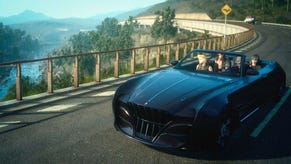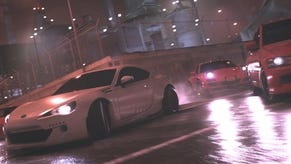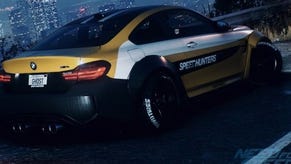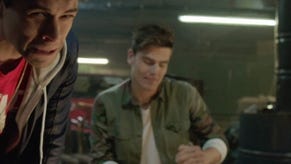Need for Speed review
Too fast, too furious.
21 years on from the series' debut on Panasonic's 3DO, billing this latest Need for Speed as a reboot feels somewhat gratuitous. These are games that have always relied on reinventing themselves with each iteration, and just as Final Fantasy is a broad church held together by airships and chocobos, so Need for Speed is a loose collection of games only ever defined by the act of pushing fast cars to their extremes.
Ghost Games' latest take, its second after 2013's enjoyable Rivals, certainly has a keener eye on the series' past than more recent efforts. Folding in the customisation of 2003's Underground, the open world of 2005's Most Wanted and some of the muscular physics of Criterion's excellent run, this Need for Speed apparently intends to be something of a greatest hits compendium. The problem is, it also chooses to fold in some of the worst excesses seen in the likes of The Run and Undercover - and struggles to competently handle any of its components. The result, sadly, is a Need for Speed that's flat, awkward and a sizeable step back for the series after its recent purple patch.
A shame, as once you've got past the awkward mugging of the cinematics that frame this Need for Speed - thankfully, they're largely skippable - there's much to enjoy here. The partnership between Need for Speed and car culture website Speedhunters - a site owned by EA that, since being set up in 2008, has flourished into the premier destination for those who want to ogle cars that have been sculpted to within an inch of their life - has never been better exploited. For the most part, anyway.
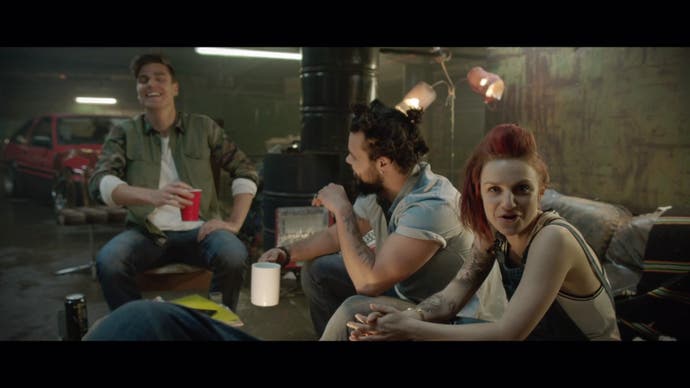
There's a thrill in taking a modest sportscar and turning it into something savage, slamming it to the floor and bolting on bulging wheel arches before applying a gaudy chrome wrap. You're encouraged to covet each car - there are only five garage slots available at any time - and it's perfectly possible to push an MX5 or a Civic far enough that it can go toe to toe with the McLarens and Lamborghinis that sit at the further reaches of Need for Speed's car list.
There are limits, though, and considering how customisation is at the heart of this new Need for Speed, it can be excessively prohibitive. If you're hoping, as I was, to replicate tuning company Liberty Walk's stunning remix of the Ferrari 458, forget it; with many of the high-end cars, there are next to no customisation options. Likewise, there's no way to share car designs with other players, and no way to browse the best work of others. For a game that's all about connectivity - and that demands an internet connection to work - that's plain strange.
Indeed, Ghost Games seems at a loss as to how to make the most of that always online connection, and makes only half-hearted attempts to justify it. You share the open world with seven other players, and are able to call upon them to help you with events, just as they can call on you. In practice, though, that rarely happens, with players occupying far-flung corners of the map while engaged in their own busywork, ticking off the sizeable list of events that pocks Need for Speed's city of Ventura Bay. Right now, there's not even a satisfactory way to pull everyone together for a race - another of many odd oversights here.
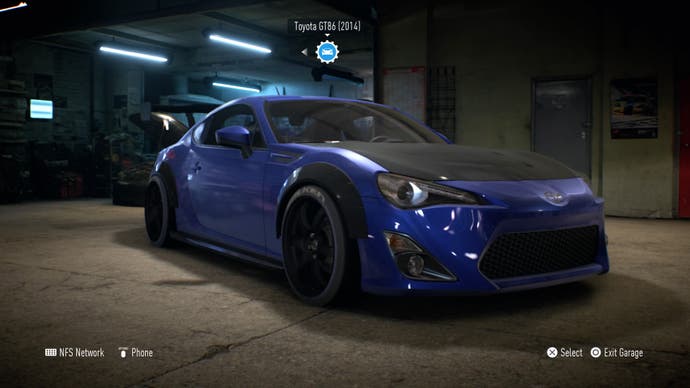
There's time, and space, for Ghost Games to come good. Over the coming months, Need for Speed will evolve as it folds in new events and new ways to play, all with the gilded promise of no micro-transactions and no paid DLC. Already there are traces of what's to come: beyond the Autolog recommendations that pit you against friends' fastest times and highest scores, there are MMO-ish Daily Challenges that give you a tick-list of tasks to see off for some small reward. But even now, Need for Speed isn't wanting for things to do, as you're reminded by the constant calls of your team-mates as they offer you new diversions; that's not Ghost Games' problem. The problem is, they're not much fun.
At least the handling's not at fault. It's perhaps indicative of this Need for Speed's desire to please everyone that Ghost Games doesn't commit to any one style, but the choice is welcome and the options work. For those who preferred the more planted feel of older models in the series, there's a grip option, while the tail-happy Criterion days are replicated by opting for drift, with a simple slider in the set-up allowing for every possibility in between. There's no room for anyone looking for something more sim-minded, with no option for manual gears, but Need for Speed - the curious Shift spin-offs aside - has never really played that game, and when it comes to offering an assortment of lighter, more approachable models, Ghost Games acquits itself well.
Ventura Bay, the fictional Californian city that hosts this Need for Speed, poses the bigger problem. An urban sprawl painted with the slightly ill-fitting edginess that pervades this game, it's a disappointingly anonymous play space. Save for the odd tease of dawn that comes to nothing, it's a city that's bathed in constant darkness, its streets always slick with a film of rain, a decision that robs it not only of life - police patrols are rare, and all too easy to duck out of, while other traffic is all but absent - but makes it exceptionally hard to read.

When threading 500 horses through a chassis that was only ever intended to take half as much power, that's a problem. Your attention is suspended somewhere between the blue chevrons of the racing line overlay and the mini-map, rather than reading the tarmac ahead of you. When sharing the road with other competitors, it's even more of a drag, the drift events that make up half the game often devolving into demolition derbies, while the races that form the other half leave little room for player improvisation. Ultimately, in the grinding steel and clumsiness of so many of Need for Speed's events, there's a big hole where Criterion's punchy car combat used to be.
Ghost Games' decision to largely forgo much of what made Criterion's games work is a strange one, especially given how Rivals built on that DNA so well, but it's not the only questionable choice here. This is a Need for Speed that has managed to drill down into what's made the series a success, yet at the same time fumbled what it has found, making for a detached, unsatisfying experience that frustrates far more than it thrills. The next 12 months will be telling as Ghost Games builds upon this shaky foundation, and it may prove a task too far. Perhaps it was inevitable that in making a game that draws so heavily on Need for Speed's chequered past, this would be destined to lace the good with the bad.


